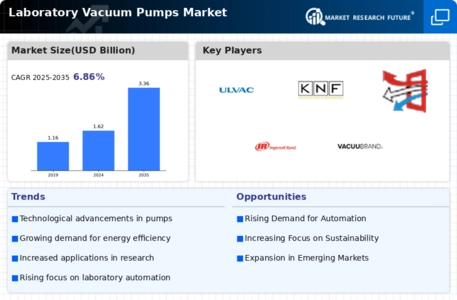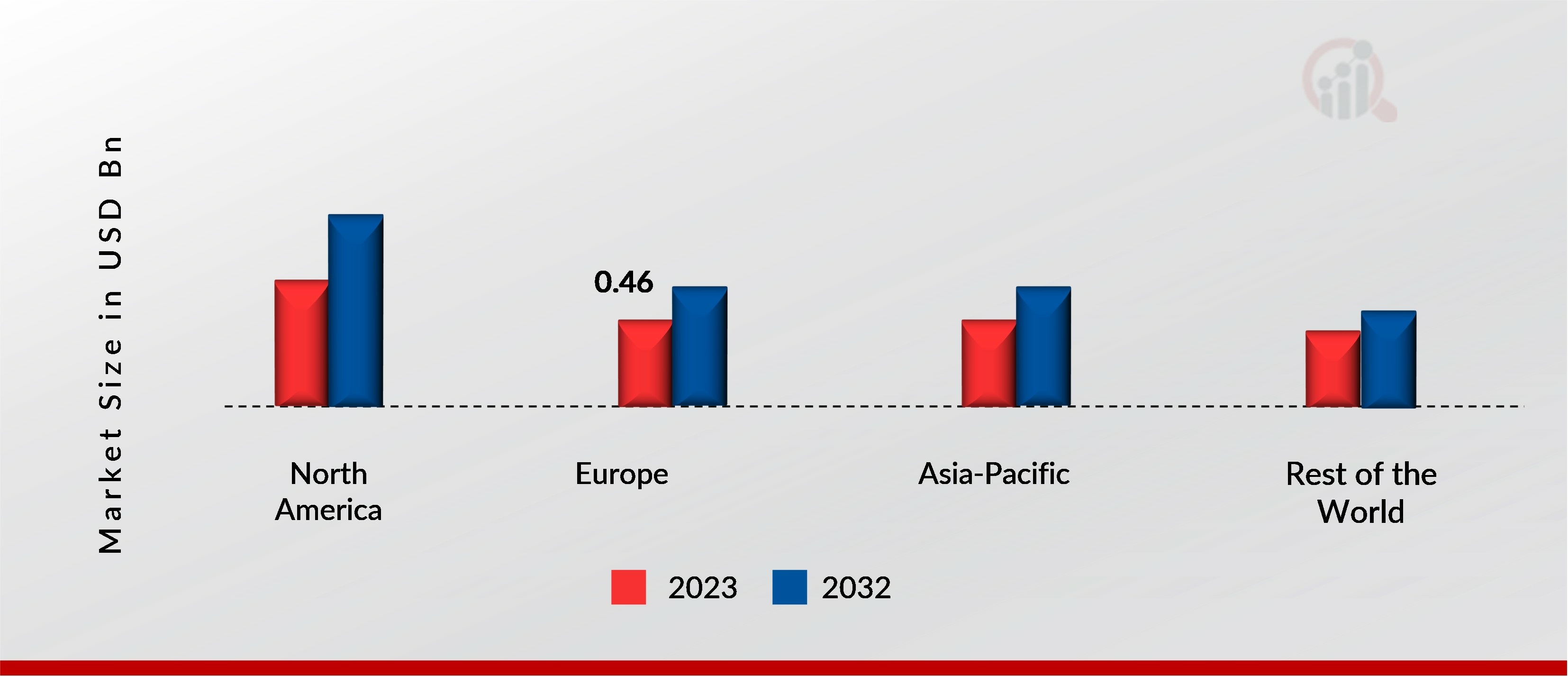Market Trends
Introduction
As we approach the year 2024, the laboratory vacuum pump market is experiencing a great deal of changes, driven by a number of macroeconomic factors. At the forefront of these changes are the technological advances that are bringing new capabilities in pump efficiency and automation to a wide variety of applications. But there are other factors at work as well, primarily the increasing regulatory pressures that are pushing manufacturers to adopt more sustainable practices and develop more sustainable products. Moreover, the growing demand for precision and reliability in laboratory settings is changing the market. These macroeconomic factors are strategically important for market participants, not only because they influence their competitive positioning but also because they dictate the direction of future investments and research efforts.
Top Trends
-
Increased Demand for Energy-Efficient Solutions
With the increasing costs of energy, the laboratory is now placing a priority on energy-efficient vacuum pumps. Companies like Agilent are developing pumps that consume less power, resulting in savings on operating costs. According to the manufacturer, energy-efficient pumps can reduce energy consumption by up to 30 percent. The trend toward energy-efficient vacuum pumps is expected to lead to new developments in pump design and technology, thereby contributing to the laboratory’s efforts to ensure its own sustainability. -
Integration of IoT and Smart Technologies
The Internet of Things is transforming laboratory equipment. Smart pumps can monitor their performance in real time and can be used for preventive maintenance. For example, ULVAC has launched IoT-connected pumps that provide data for analyzing performance. This trend is expected to increase the reliability of laboratory equipment, reduce downtime and increase the productivity of laboratories. -
Focus on Compact and Lightweight Designs
The smaller the pump, the more room it saves in the laboratory. The Pfeiffer Vacuum Company has introduced new lightweight models which are easier to handle and install. These new pumps are the result of the growing need for more efficient use of laboratory space, particularly in smaller laboratories. They are expected to have a wider range of uses in different scientific disciplines. -
Rising Demand in Pharmaceutical and Biotech Sectors
The pharmaceutical and biotechnology industries are the major consumers of laboratory vacuum pumps, driven by stringent regulatory requirements. Demand for specialized pumps used in drug development is met by manufacturers like Thomas Pumps. These industries are expanding, requiring ever more advanced vacuum solutions for research and production. -
Sustainability and Eco-Friendly Practices
There is an increasing demand for the sustainable operation of laboratory equipment, and manufacturers are responding by developing eco-friendly vacuum pumps. The Bsch Group has launched a series of pumps that use natural refrigerants. This development is in line with the worldwide trend towards sustainability and will probably influence the purchase decisions of laboratories. -
Enhanced Safety Features
A great need for safety in the laboratory led to the development of a safety device for vacuum pumps. Automatic shut-off devices have been developed by the KNF Group to prevent accidents. In this way, it is possible to meet the requirements of safety regulations and the demand for pumps which put the safety of the operator and the functioning of the machine first. -
Customization and Modular Solutions
Labs are increasingly seeking specialized vacuum solutions for their specific needs. EPME has been able to offer them systems that can be adapted as their needs change. This new approach is expected to enhance the flexibility and efficiency of the laboratory’s operations, allowing it to optimize its processes and equipment. -
Growth in Research and Development Activities
Increasing investment in R & D in all fields is boosting demand for laboratory vacuum pumps. Atlas Copco AB has reported a sharp rise in orders from the scientific community. Moreover, this trend is expected to continue, as both governments and private industry increase their investment in scientific research, thereby boosting demand for vacuum technology. -
Regulatory Compliance and Quality Standards
The ever more stringent regulations in the field of laboratory equipment are driving manufacturers to ensure that their vacuum pump offerings comply with the stricter requirements. Ingersoll Rand has developed its vacuum pumps in accordance with international quality standards. This trend will have a significant impact on the development strategies of the various manufacturers. -
Emergence of Advanced Materials in Pump Manufacturing
The vacuum pump is a machine that is designed to draw off the air in a vacuum. Its performance is increased by the use of advanced materials. Companies are working on new composites and alloys that can withstand the harsh conditions in laboratories. This should increase the service life and reliability of pumps and reduce maintenance costs and downtime for laboratories.
Conclusion: Navigating the Laboratory Vacuum Pumps Landscape
Laboratory Vacuum Pumps Market is characterized by intense competition and significant fragmentation, with both established and new players vying for a larger market share. This is especially true in Asia-Pacific and North America, where demand is expected to grow significantly. These players have a strong brand name and a wide distribution network, which they use to their advantage, while new entrants focus on innovation and specialized applications. In the near future, the market will be characterized by technological sophistication and automation, and the integration of artificial intelligence with automation, as well as sustainable practices and flexible operations. These are the capabilities that suppliers must prioritise in order to gain a competitive advantage and meet the evolving needs of laboratory environments.









Leave a Comment